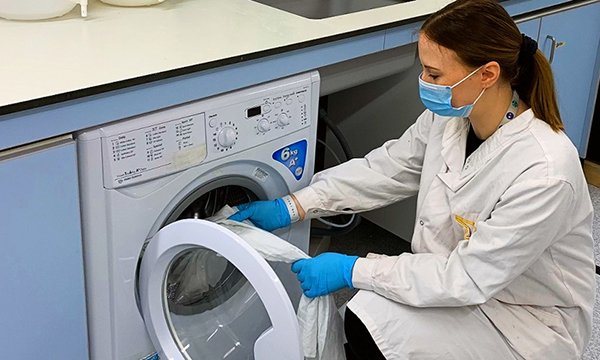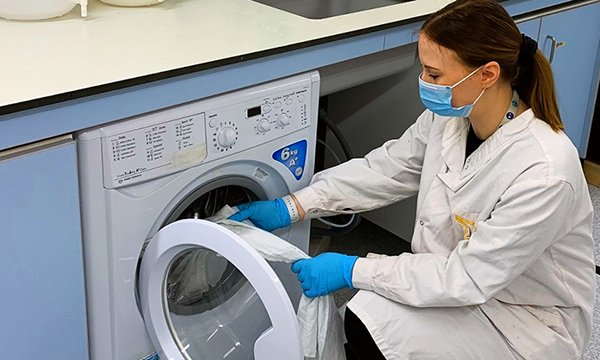Lack of on-site changing forces nurses to wash uniforms at home

A study reveals that nurses and healthcare staff are unable to wash their uniforms to NHS infection control standards due to lack of on-site changing facilities

A lack of on-site changing facilities means nurses and other healthcare professionals are unable to wash their uniforms to NHS infection control standards, a new study has found.
Survey finds most nurses are unable to wash uniforms at their workplace
The majority of nurses, healthcare workers and nursing students (68%) who responded to the survey said they wanted to wash their uniforms at work where washing facilities met NHS standards but often a shortage of places to change meant they had to wear scrubs and uniforms on their way home.
It means nurses are often washing uniforms at home which may not meet infection prevention and control guidance. Of the 1,277 respondents to the De Montfort University and University Hospitals of Leicester NHS Trust survey, 71% said they were confident washing their uniforms at home, but 17% failed to wash their work clothes at the recommended temperature of 60 degrees.
Principal researcher and microbiologist Katie Laird said the study’s findings reinforced the need for in-house or industrial laundering facilities for healthcare workers to reduce infection control risks.
‘If nurses are not provided with appropriate facilities to change on site, they are forced to wear their uniforms in domestic environments, such as their car or at home,’ she said.
‘This creates an infection control risk, with the potential transfer of microorganisms such as coronavirus and others that cause hospital acquired infections – particularly bacteria such as methicillin-resistant Staphylococcus aureus – from healthcare uniforms onto surfaces.’
Hygiene concerns as staff toilets function as changing areas
Some survey respondents said the only changing facility they had was the staff toilets, with one person adding: ‘I worry about changing in the toilets. It does not seem hygienic.'
A district nurse with concerns about visiting patients with COVID-19 in their homes with insufficient personal protective equipment (PPE) reported: 'We are then getting into our cars, contaminating the car and then entering other patients’ houses; we need a place at our office to change our uniform and to have it laundered.'
NHS guidance on washing uniforms
- There is little difference between domestic and commercial laundering in terms of removing microorganisms from uniforms and workwear
- Washing with detergents at 30°C will remove most microorganisms, including methicillin-resistant Staphylococcus aureus
- A ten-minute wash at 60°C is sufficient to remove almost all microorganisms
Professor Laird has previously called for in-house laundering facilities for hospitals after another study from the team found that nurses’ uniforms could harbour viruses similar to the coronavirus for up to 72 hours unless washed with detergent at a temperature of at least 40°C.
Find out more
Health care worker knowledge and attitudes towards uniform laundering during the COVID-19 pandemic
In other news

